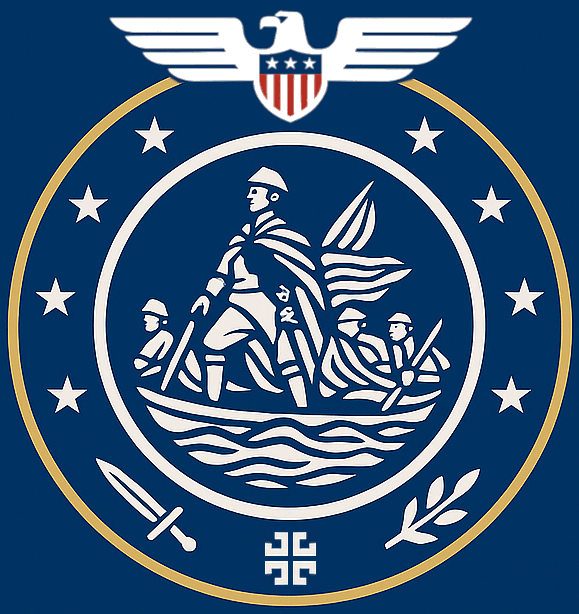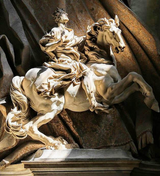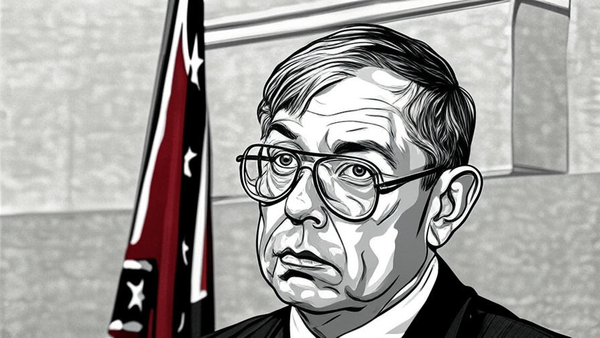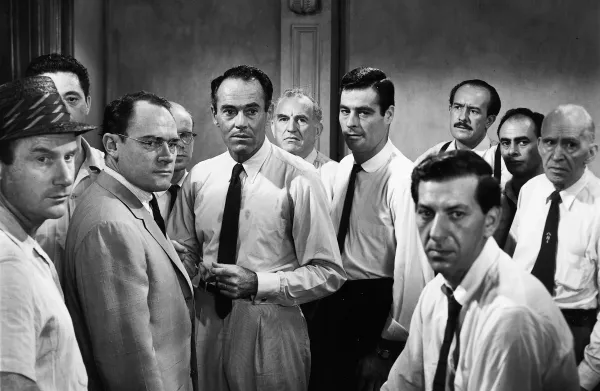From Ashes to Abundance: The Jewish Golden Age in America
Auschwitz offers nothing but the silent embers of a futile sacrifice.
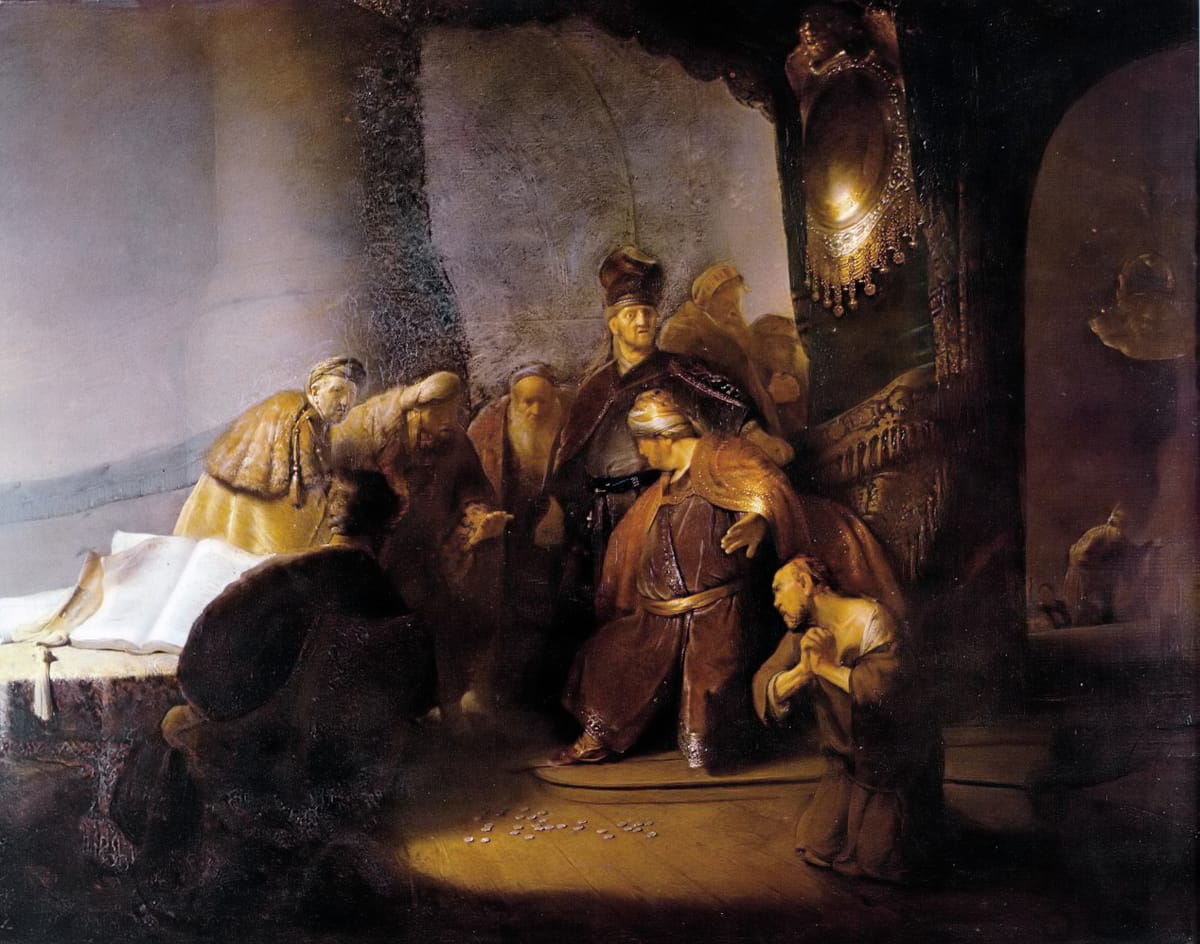
The Jews of America are no longer safe.
The Post-Holocaust “Golden Age” of guilt-based acceptance of Jews is over.
—Ben M. Freeman, 2021
Introduction
In the decades following World War II, over 2,200 Roman Catholic bishops convened for the Second Vatican Council (1962–1965), the most significant ecumenical gathering since Vatican I (1869 – 1870) and the Council of Trent (1545–1563). Amid reforms addressing liturgy, doctrine, and practice, the council issued a declaration termed Nostra Aetate ("In Our Time"), a landmark declaration addressing the Catholic Church’s relations with non-Christian religions. In the short document that briefly references Islam, Hinduism, Buddhism, and especially Judaism, the Catholic church declared:
Since the spiritual patrimony common to Christians and Jews is thus so great, this sacred synod wants to foster and recommend that mutual understanding and respect which is the fruit, above all, of biblical and theological studies as well as of fraternal dialogues.
Elsewhere, the document decried “displays of anti-Semitism, directed against Jews at any time and by anyone.”
The inclusion and condemnations of antisemitism articulated in Nostra Aetate were significantly shaped by the efforts of Jules Isaac, a French-Jewish historian who, in a 1960 audience with Pope John XXIII, urged the Church to address the historical influence of Christian teachings on antisemitism in Europe. In the years leading to Vatican II, Isaac diligently worked to develop and promote theological tenets aimed at mitigating negative stereotypes of dispersed Jews. Just two years after the war, at the Seelisberg Conference in Switzerland, Issac was urging attendees to confront the moral and theological ramifications of the Holocaust. One such address to Christians opened with the following:
We have recently witnessed an outburst of antisemitism which has led to the persecution and extermination of millions of Jews. In spite of the catastrophe which has overtaken both the persecuted and the persecutors, and which has revealed the extent of the Jewish problem in all its alarming gravity and urgency, antisemitism has lost none of its force, but threatens to extend to other regions, to poison the minds of Christians and to involve humanity more and more in a grave guilt with disastrous consequences.
The Christian Churches have indeed always affirmed the un-Christian character of antisemitism, as of all forms of racial hatred, but this has not sufficed to prevent the manifestation among Christians, in various forms, of an undiscriminating racial hatred of the Jews as a people.
—An Address To The Churches, Seelisberg (Switzerland), 1947
The adoption of Nostra Aetate by the Roman Catholic church at the urging of a Jewish historian is but one example of how the events of World War II and the perceived genocide of Polish and German Jews “purchased” the resultant “Jewish Golden Age” in America lasting until the 2000s.
They Cry Out As They Strike You
The Jewish people have had their share of suffering, and most of it by their own fault. After the destruction of the second temple, Judaism was left with no land, no high priest, and no sacrificial system, and completed its transformation into a uniquely cosmopolitan, ethno-religion. Their disdain for the rapidly Christianizing West quickly set them at odds with their Western European neighbors. As Christians were generally allowed to borrow from Jews but not from other Christians, Jews were occasionally valued briefly as they spread across Europe. However, Christian authorities frequently deemed it necessary to expel them, citing either their exploitative lending practices or the need to erase debts owed by Christians. Consequently, their reputation deteriorated, leading to increasing obstacles in conducting business and establishing settlements
This presents the conundrum that Zionism was intended to finally solve. Where do we Jews go? Where can we be ourselves? Where can we practice, observe, and rest? Consider the laments of the father of Zionism, Theodor Herzl:
In vain are we loyal patriots, our loyalty in some places running to extremes; in vain do we make the same sacrifices of life and property as our fellow-citizens; in vain do we strive to increase the fame of our native land in science and art, or her wealth by trade and commerce. In countries where we have lived for centuries we are still cried down as strangers. and often by those whose ancestors were not yet domiciled in the land where Jews had already had experience of suffering. […] If we could only be left in peace.
—Herzl, The Jewish State
Widespread antisemitism in Russia and Eastern Europe during the late 19th and early 20th centuries fueled the Zionist movement’s advocacy for a Jewish homeland. Following World War II, the allegations of genocide at the Nuremberg Trials catalyzed international support for establishing a Jewish state. Britain, an early proponent of Zionism through the 1917 Balfour Declaration, relinquished its mandate over Palestine in 1947. The United Nations furthered this process by proposing a partition plan that envisioned separate Jewish and Arab states. Capitalizing on this opportunity, David Ben-Gurion, leader of the World Zionist Organization, proclaimed Israel’s independence on May 14, 1948, marking the founding of the modern State of Israel.
However, the challenges that confronted Jews historically, including antisemitism in Europe, economic restrictions, and regional tensions, persisted beyond Israel’s declaration of independence. The following day, neighboring states—Egypt, Jordan, and Syria—initiated the 1948 Arab-Israeli War. Countries in East Asia, such as Japan and China, approached the new state with caution, deferring formal diplomatic recognition for years. But amid this adversity, Israel found itself with a powerful ally in the post-war shake-up of Europe: America.
The American Jewish Golden Age
From its inception, the United States demonstrated support for the newly founded State of Israel under President Harry Truman. Truman’s decision was notably shaped by his associate Eddie Jacobson, who facilitated a meeting with Chaim Weizmann, Israel’s first president, in March 1948. Following Israel’s declaration of independence on May 14, 1948, Truman extended formal recognition to the state within minutes, underscoring America’s early commitment to Israel’s sovereignty.
The period that followed, the "Jewish Golden Age," spanned from the mid-1950s to the early 2000s and was significantly shaped by the cultural and moral resonance of the Holocaust narrative. Works such as the 1955 play and 1959 film adaptation of The Diary of Anne Frank achieved widespread acclaim, while the 1961 televised trial of Adolf Eichmann, a former SS officer, drew millions of viewers, introducing detailed accounts of the Holocaust to American audiences. By the mid-1960s, this narrative gained momentum, leading to the establishment of Holocaust museums and its integration into educational curricula by the early 1990s. Practically nothing threatened the status of American Jews during this time. This embrace “unleash[ed] a Golden Age of American Jewry, an unprecedented period of safety, prosperity, and political influence,” as Jewish journalist Franklin Foer wrote in 2024. America’s embrace of the State of Israel, and more specifically, American Jews, fostered their complete civic participation without demanding the surrender of their Jewish identity. In Foer’s words:
Jews, who had once been excluded from the American establishment, became full-fledged members of it. And remarkably, they achieved power by and large without having to abandon their identity. In faculty lounges and television writers’ rooms, in small magazines and big publishing houses, they infused the wider culture with that identity. Their anxieties became American anxieties. Their dreams became American dreams.
From academia to entertainment, America imbibed deeply of the Jewish social vision. Economist Marc Dollinger observed that:
[Jews] fashioned many of the twentieth century’s most important social welcome programs and proved instrumental in the transformation of modern American liberalism. Jews stood at the crossroads of twentieth-century American political change and helped direct the nation towards a vision of democracy rooted in tolerance, pluralism, and the rule of law.
The involvement of Jews in crucial social junctures such as expanding gay rights, feminism, desegregation, legalization of pornography, and central banking is all well documented and known. But more foundational, and destructive, were their efforts in academic and political circles to reformulate the conception of America as a creedal nation and the expansion of voting rights. This occurred on the left, e.g., Stanley Levison (handler of Martin Luther King Jr.), but also on the ostensible “right” via figures Leo Strauss, Harry Jaffa, and Irving Kristol, core founders of today’s neo-conservatism, and all Jews. Strauss disciple Harry Jaffa, co-founder of the Claremont Institute, described Strauss’s life work as creating “A world in which, first of all, in which Jews could live peacefully.” By 2020 it was virtually unthinkable to refer to America as a distinctly European and Protestant project, and it was practically universally accepted that it was possible that anyone anywhere could become an American.
On both sides, either via destabilizing immigration and expanded suffrage, or the rewriting of the America mythos as a project based in equality, Jews directly assaulted the foundations of America’s Anglo-Protestant heritage for close to a half-century. Few resisted or spoke up, and reputations of the few that did suffered for it (e.g., President Richard Nixon). Leonard Dinnerstein, a historian who studied antisemitism for decades, declared in 1994:
[Antisemitism] has declined in potency and will continue to do so for the foreseeable future.”
The Burnt Sacrifice
Holocaust derives from an older Greek term holokauston signifying a completely (holos) burnt (kaustos) offering, typically sacrificial in nature. The Septuagint uses holokauston as a translation at times for the Hebrew olah, which signifies a fully consumed sacrifice. The word included an additional element of catastrophe as well in its limited Greek, Latin, and eventually English use. Interestly, it was invoked in the late 19th century in reference to the massacre of Armenian Christians by the New York Times before its adaptation for the events of WWII.
The adoption of Holocaust to describe what is believed to have transpired on the Eastern Front of WWII is not random. In the Levitical system burnt offerings cleansed impurities, expressed devotion, and atoned for sin. Man knows he needs this cleansing sacrifice.
And [the Priest] shall bathe himself with water in the sanctuary area and put on his regular garments. Then he shall come out and sacrifice the burnt offering for himself and the burnt offering for the people, to make atonement for himself and for the people.
—Leviticus 16:24
The cosmos at its deepest layers is cruciform, imbued with the yearning for atonement through the sacrifice of one whose death alone can expiate.
—Sohrab Ahmari, The Cross and the Vine of Death
Yet, in their collective rejection of the Messiah, the Jews forfeited the sole prospect of enduring atonement, condemned to wander the earth as a cursed proverb and object of ridicule (Deuteronomy 28:37). Zionism’s impulse to establish a homeland, though comprehensible, is marred by a stubborn refusal to integrate into the Christian West. Thus, the brutality of the Eastern Front was needlessly embellished by unbelievable myths of pederasty and human-skin lampshades. The purported use of industrial crematoria that rendered fat, bone, hair, and skin into untraceable ash, served more as a narrative device than a practical mechanism, consummating a mythological sacrifice. This constructed holocaust narrative secured a reimagined Jewish identity in a new promised land of America. The Jews rejected their Messiah and refused assimilation in Europe, choosing instead to leverage the widespread devastation of the West during a worldwide war towards the ends of grievance and guilt.
A New American Religion
The Holocaust narrative’s pervasive influence requires no proof of fabrication or orchestrated manipulation to evoke guilt in the American consciousness, as its impact is manifest and incontrovertible. The United States, surpassed only by Israel in Holocaust memorials per capita (approximately one per 9 million versus one per 7 million), exhibits an enduring fixation on the Holocaust, as though it represents the genesis of a novel original sin—the extermination of God’s covenantal people. This constructed narrative serves the same function as the paltry fig leaves that once clothed Adam and Eve; insufficient coverings for the shame of subverting the Christian ethos that once defined the nation.
This fixation could only emerge from the concerted efforts of a people resolute in their rejection of Christ. Auschwitz supplants Calvary, flitting ash displaces sanctifying blood, and genocide eclipses deicide as humanity’s gravest transgression. Neither our temporal nor geographic distance from this alleged contemporary Golgotha mitigates our culpability. Through the tales and myths woven from the Eastern Front’s horrors, we are compelled to recognize our own complicity and urged to confess, “It could have been me,” as a ritual of collective contrition. Christopher Browning’s 1992 book Ordinary Men is titled to evoke exactly that sentiment. “These were just ordinary men…and look what insidious antisemitism made them do.”
This new American religion of guilt, sacrifice, and fiery atonement has unquestionably captured the minds and hearts of our fellow countrymen. Yet, akin to the prodigal son mired in degradation, ruin, and destitution, such depths may prelude our redemption. The twilight of the American Jewish Golden Age dawned in the late 2010s as the nation awoke to the realization that it had bartered our heritage for scraps. We received capitalism that ships our labor overseas, a centralized banking system that inflates the value of inheritance to nil, and perversion accessible from virtually anywhere in the world. Jewish figures, conspicuously prominent in the leadership of both ostensible "left-wing" and "right-wing" political factions, orchestrate a charade of opposition, while both conspire to alienate our countrymen from their homeland, toil, and faith.
In a 2003 article “The Passion of Jesus Christ and the Passion of Auschwitz” John Piper pondered:
Perhaps only Jesus in the end can know what happened during the "one long night" of Jewish suffering. And perhaps a generation of Jewish people, whose grandparents endured their own noxious crucifixion, will be able to, as no others, to grasp what happened to the Son of God at Calvary.
I leave it as a question. I do not know.
Whatever transpired on the Eastern Front, no redemptive crucifixion occurred, no matter how noxious. Auschwitz offers nothing but the silent embers of a futile sacrifice.
The Path Ahead
A devasting combination of war, rapid globalization, and abandonment of the robust Protestant Christianity of pre-war Europe fomented the birth a new religion. Toleration, liberalism, and the secularization of American imported by Jews in the second half of the 20th century replaced our creeds with liberal shibboleths, our repentance with perpetual penance, and our Protestant hegemony with religious pluralism. In specific, we disregarded the warnings of our wise fathers who admonished us that welcoming Jews into our commonwealth and their synagogues on our streets would bring our destruction.1
The way forward is the way back. Paul exhorts that through Christ we “[cast] down imaginations, and every high thing that exalteth itself against the knowledge of God (2 Cor 10:5).” In our day the “high things” are our Holocaust museums and mandatory public school Holocaust education. These are modern fixtures that would never have been tolerated in centuries prior.

A full assault on the Holocaust narrative is the only possible way to begin to undo the religious nature of our American Judeophilia and its accompanying liberal frame. We must dismantle the lies and the religion built on the Holocaust narrative. Our Christian fathers showed us the way before. Will we have the courage to follow them?
Footnotes
- Consider for example, Samuel Rutherford: “To tolerate Jews openly blaspheming Christ, or to receive them in the Common-Wealth, cannot be allowed, or to suffer them to have Synagogues, in regard they blaspheme the God we are in Covenant with, and doe no less deny him, than Goliah and Senacharib did."
—A Free Disputation Against pretended Liberty of Conscience
